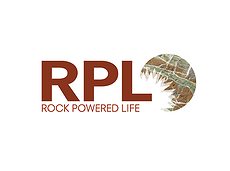University of Colorado, Boulder
01/2015 -
12/2019
(CAN 7)
Rock-Powered Life: Revealing Mechanisms of Energy Flow From the Lithosphere to the Biosphere
Rocky planets store enormous amounts of chemical energy that can power living systems when this energy is released through the interaction of rocks with water. Astrobiological investigations have commonly used a thermodynamic framework to predict the habitability of planetary environments based upon the disequilibrium between minerals, aqueous species and gases across gradients. Yet this versatile framework identifies only the potential for habitability and does not allow one to necessarily predict which habitable niches are effectively occupied and transformed by biological organisms. When we interrogate modern systems, we often find both oases and deserts of biological activity within broadly “habitable” environments, which demonstrates that the release and utilization of stored energy and nutrients is discretely focused. Such observations highlight the gaps in our ability to predict the distribution and abundance of life beyond Earth, to develop detection strategies for extraterrestrial life, and to improve hypotheses concerning the earliest ecosystems to emerge on Earth.
There is a need to mechanistically define how, when and where geological systems power biological processes, particularly within the vast but under-defined realm of environmental conditions where rocks and water react at low temperatures. Members of the University of Colorado Rock-Powered Life team have come together to integrate their interests, expertise and activities to answer a challenging but compelling astrobiological question that only an interdisciplinary team of researchers can address:
How do the mechanisms of low temperature water/rock reactions control the distribution, activity, and biochemistry of life in rock-hosted systems?
The primary objective of the University of Colorado team is to make the next advance in developing a quantitative, process-oriented understanding of how water/rock interaction processes shape the habitability of landscapes and dictate when portions of these landscapes are occupied by life. The team’s overarching goal is to reveal the threshold conditions and pathways whereby geologic systems power biological systems, capitalizing upon opportunities to place their studies within the context of systems currently undergoing active serpentinization. The strength of the Rock-Powered Life team lies in applying their combined expertise in experimental, theoretical and field geochemistry, mineralogy, isotope systematics, bioenergetics, microbial physiology, molecular ecology, evolution and philosophy to approach systems at a mechanistic level, while being purposely comparative in nature, especially when biological and geochemical data can be adequately sampled along continuous gradients of environmental characteristics. Co-registered observations of in situ geochemistry and whole-community censuses of microbial diversity and function at special modern serpentinization field sites in California (CROMO), the Atlantis Massif, and the deep subsurface in Oman will guide the choice of living systems to study physiologically and to analyze in situ and in laboratory water/rock experiments.
The University of Colorado team will quantitatively assess changes in the redox state, chemistry and mineralogy of peridotite rocks as they undergo progressive hydration and electron-transfer with fluids. In addition, from the field to laboratory, the team will track the presence and activity of key organisms and genes associated with the metabolism of H2, formate, and CO, as well as the redox cycling of Fe and S, using both metagenomic, and metatranscriptomic approaches. These data will be integrated with detailed geochemical measurements, process rate measurements, and calculations of energy flux in order to build new models of how biology exploits minimal energetic gradients made possible by low-temperature serpentinization. Finally, this team we will apply robust evolutionary tools to the obtained sequence data and the output will be combined with detailed geochemical, energetic, and biological measurements to develop new models to describe the role of environmental variation in shaping the diversification of life in ecosystems supported by water/rock reactions. The characterization of the chemical, mineralogical and biological products will also provide essential new insights into search and recognition strategies for biomarkers.
The central research foci of the University of Colorado team are:
- Defining the pathways that control how energy is released from ultramafic rocks as they react with low-temperature fluids
- Identifying and interpreting the process rates and ecology in systems undergoing water/rock reaction
- Characterizing microbial communities within rock-hosted ecosystems and evaluating their metabolic activities
- Quantifying the geochemical and mineralogical progression of serpentinization reactions in the presence and absence of biology
- Developing and testing predictive models of biological habitability during water/rock interaction
The team’s overall research plan is aligned along two tightly interwoven themes that will allow them to systematically develop and test new conceptual models of Rock-Powered Life.
Theme 1: Systems undergoing low-temperature serpentinization as test-beds for determining habitability.
Theme 2: Experimental constraints on pathways of water/rock interaction, in the presence and absence of biological processes.
 Figure 1: The Rock-Powered Life team will provide the first comprehensive analysis of the feedbacks between water/rock interaction, habitability and life activity during low‐temperature serpentinization.
Figure 1: The Rock-Powered Life team will provide the first comprehensive analysis of the feedbacks between water/rock interaction, habitability and life activity during low‐temperature serpentinization.
TEAM LOGO:

-

Alexis Templeton

-
Active Dates:
01/2015 - 12/2019 -
Team Website:
http://www.colorado.edu/lab/rockpoweredlife/ -
Members:
56 (See All)



